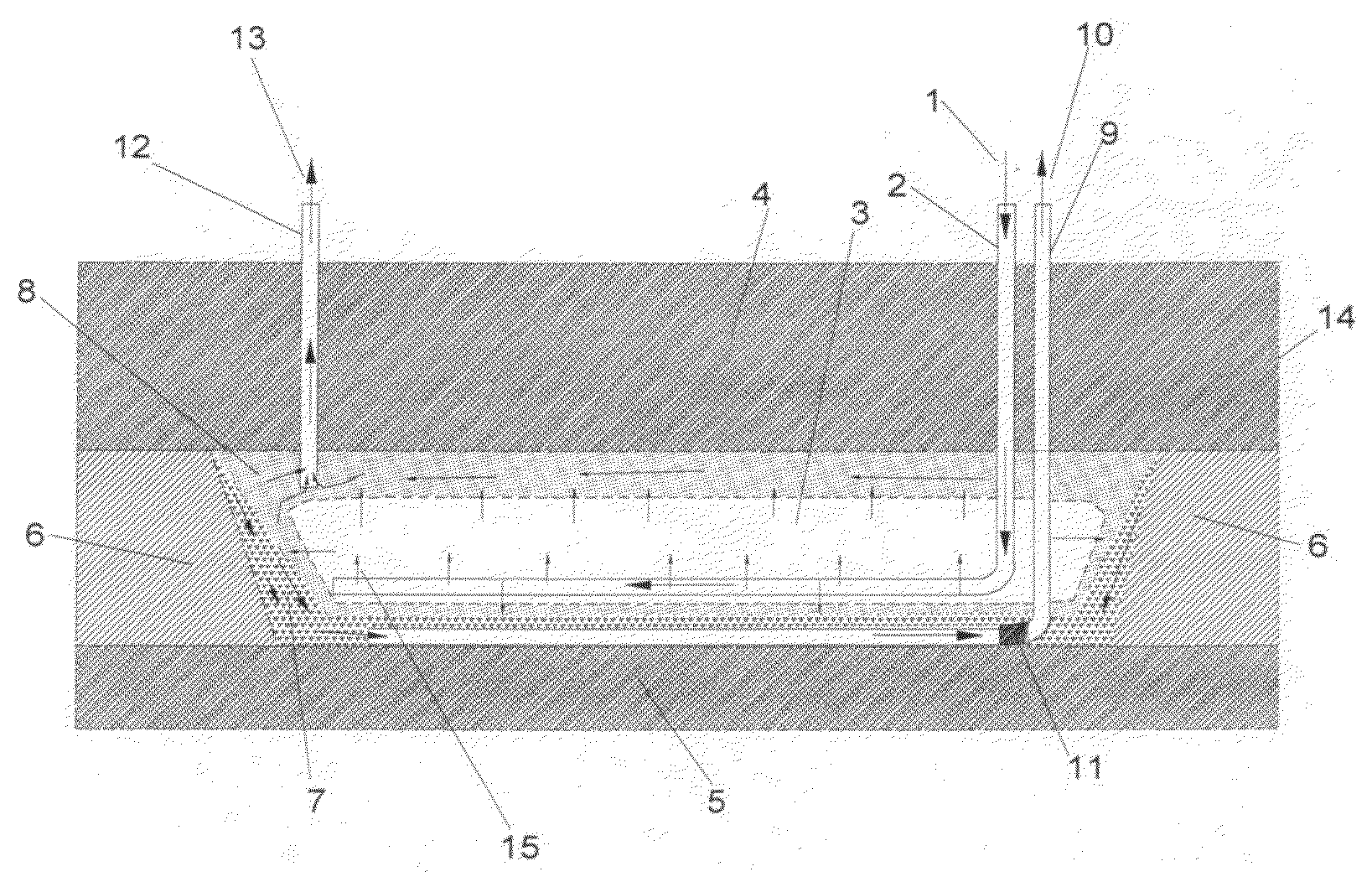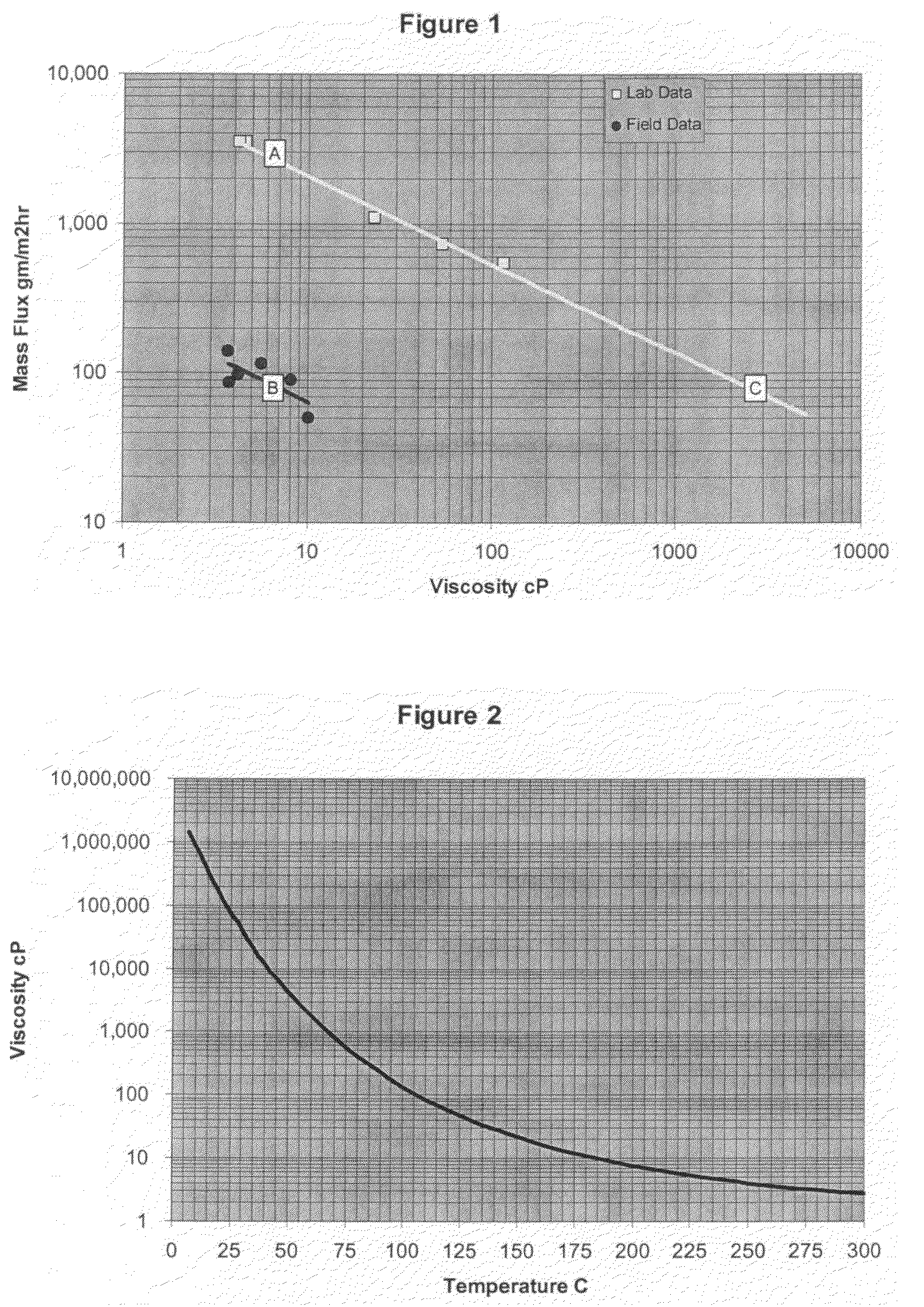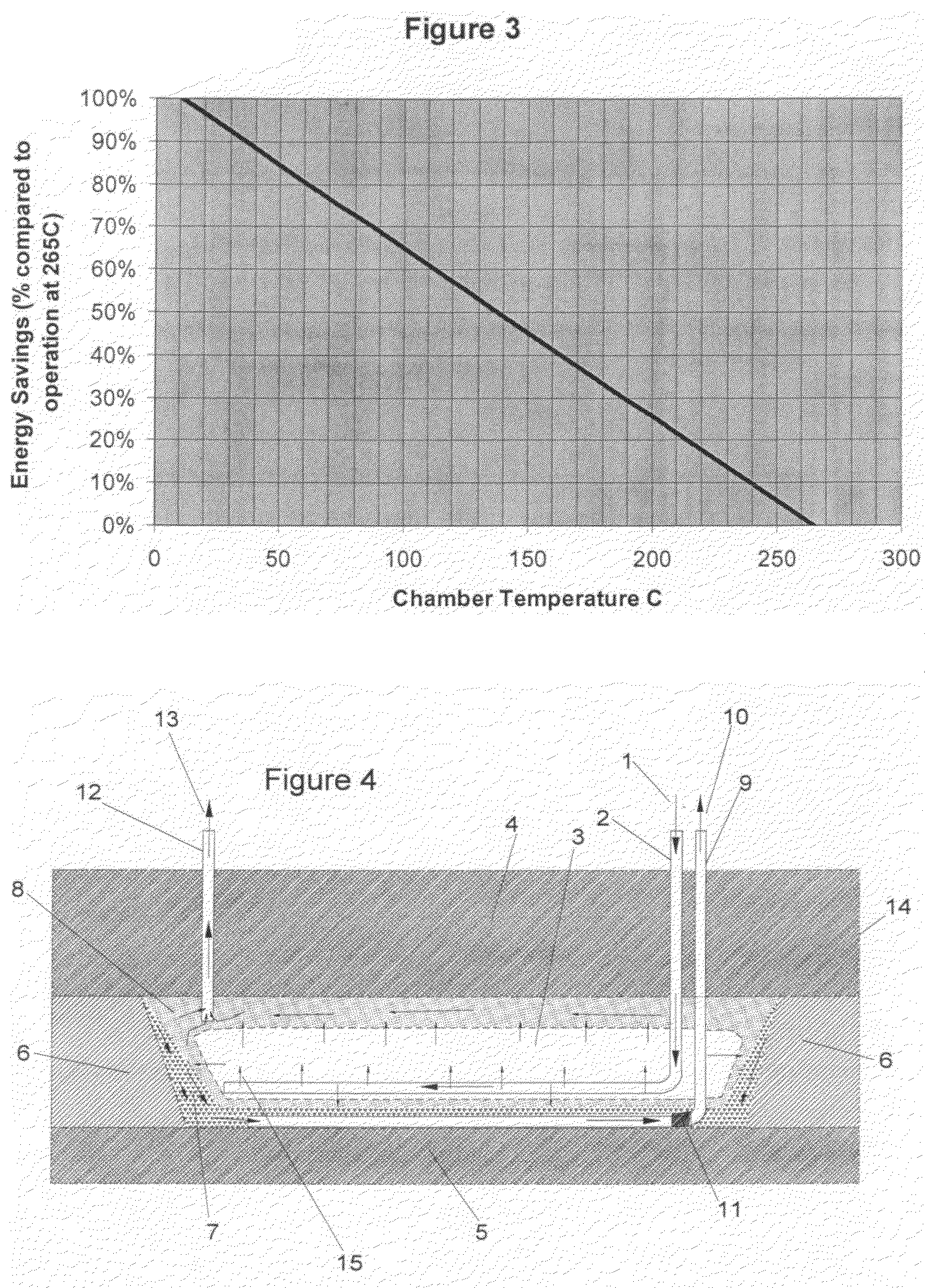Methods and apparatuses for sagd hydrocarbon production
- Summary
- Abstract
- Description
- Claims
- Application Information
AI Technical Summary
Benefits of technology
Problems solved by technology
Method used
Image
Examples
Embodiment Construction
[0039]In this specification the following terms shall have the following meanings. The term “barrier gases” shall mean gases other than steam that are found in an operating SAGD chamber. The gases will be primarily composed of methane and the primary source of the gases is the warming bitumen. However, there also may be additional gases, such as carbon dioxide and hydrogen sulphide evolving from the bitumen or from steam mineral reactions as well as gases other than steam that are introduced into the chamber as contaminants along with the steam. The gases that are most problematic and become barrier gases according to the present invention are those that have such a low solubility in hot water and bitumen that they tend to preferentially accumulate to fairly high concentrations at the perimeter of the chamber. What is of importance is not the source of the gases, but the management of such gases other than steam that accumulate in the chamber. The term bitumen shall mean heavy or vi...
PUM
 Login to View More
Login to View More Abstract
Description
Claims
Application Information
 Login to View More
Login to View More - R&D
- Intellectual Property
- Life Sciences
- Materials
- Tech Scout
- Unparalleled Data Quality
- Higher Quality Content
- 60% Fewer Hallucinations
Browse by: Latest US Patents, China's latest patents, Technical Efficacy Thesaurus, Application Domain, Technology Topic, Popular Technical Reports.
© 2025 PatSnap. All rights reserved.Legal|Privacy policy|Modern Slavery Act Transparency Statement|Sitemap|About US| Contact US: help@patsnap.com



